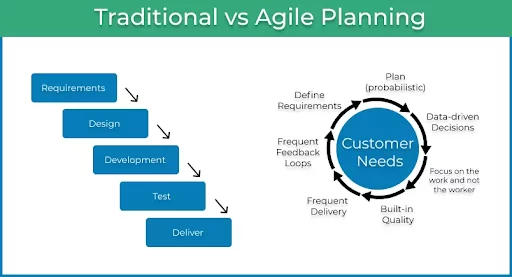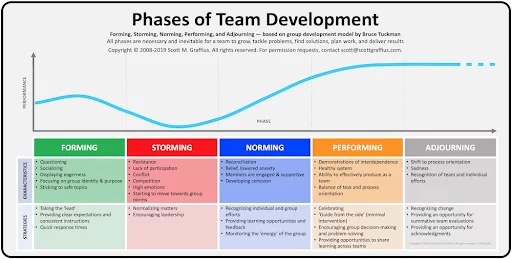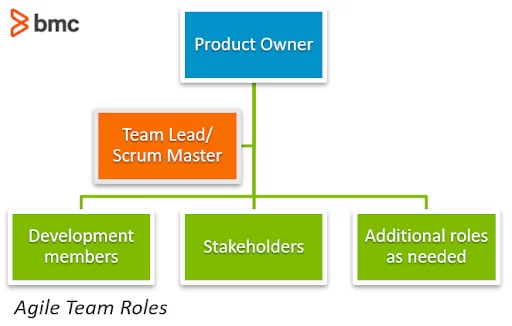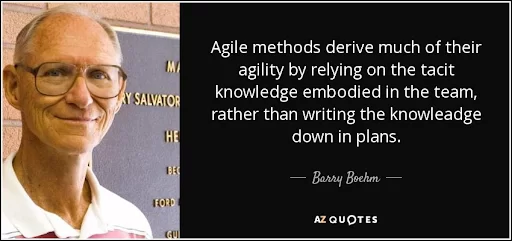AI/ML
10 Core Characteristics of High-Performing Agile Team
Top Agile Team Characteristics Essential For Your Team
Unrooting the traditional “waterfall” practices in the business, the agile software development process is the new norm per HP online survey. But why follow agile?
- Enhances collaboration
- Impacts quality of software
- Reduces time of development
- Reduces the overall cost of software development
With so many benefits, having an agile team gives you an upper hand in development. But as an IT manager, what to check when onboarding an agile team? Don’t worry; through this blog, we bring you top agile team characteristics through this blog.
Let’s get started:
What Does An Agile Team Mean?
An agile team is a group of highly skilled individuals working towards a common goal, i.e., define, build, test, and deliver – software right in time.

Unlike the traditional approach, what’s different about an agile team? Let’s understand more about the agile lifecycle:
1. Concept
The first step is to list the priority of the projects, identify business opportunities, and define the project completion cost and timelines. This benefits the team to deliver tasks before the scheduled deadline.
2. Inception
Once the project priority is defined, it’s time to onboard the team and defines its KPIs.
3. Iteration
Here the agile team starts working on the actual design, development, and testing, divided into several sprints.
4. Release
After multiple iterations, the end product is ready to get into the release stage. The testing team plays a crucial role in identifying bugs, defects, and other tests to release the product.
5. Production
Finally, the team starts making the software live when everything is approved, and QA tests are passed.
6. Retirement
Once the product is live and handed over to the customer, it’s time to end the activities.
How Is An Agile Team Formed?
Assembling an agile team that works closely together without sacrificing quality can be challenging. As an IT or product manager, your role is first to decide what you want to implement, i.e., Scrum or Kanban. But in the end, your agile team should possess all the required skills and sound engineering practices but should not miss many parts of the business, including marketing, HR, and finance.
To form an agile team, we recommend using Tuckman’s Model of Agile Team Dynamics:

- Forming
- Storming
- Norming
- Performing
- Adjourning
What Are The Roles And Responsibilities Of An Agile Team?
An agile team only works with one aim: to make software development concepts and processes simple to understand and define clear guidelines for all the developing models.
However, it becomes essential to clearly define the roles and responsibilities of everyone in the agile team, and they have to do it right in a specified time. Usually, there are 3–9 team members in an agile team, and we have mentioned a few roles they may perform in the list below:

1. Product Owner
A product owner is a primary individual responsible for setting the course of product or software development. The product owner has to do everything from the client and team communication to keeping stakeholders in the loop. The primary roles of an agile team product owner are:
- Scrum backlog management
- Release management
- Stakeholder management
2. Scrum Master
Scrum masters are guides and facilitators for the team members and help product managers to ensure that the task is going fine. They are responsible for:
- Conducting Scrum and Sprint initiatives
- Planning of the product development journey
- Managing administrative tasks
- Execute changes
- Optimize the backlog
3. Development team
An agile development team is a part of both functional and cross-functional team members with specific responsibilities. The team comprises:
- Product designer
- Writer
- Programmer
- Tester
- UX Specialist
4. Stakeholder(s)
Stakeholders are investors, managers, executives, and more. They can be more or less, depending on the company’s size. They look over the tasks of all the people in the company.
Trust a team who is following Agile framework to build great products since 2011.
Start your product journey with usThe Top 10 Characteristics Of A High-Performing Agile Team:
1. Proficiency in self-organization
A good agile team has to have the virtue of self-organization, and it is rightly said that:
“The best architectures, requirements, and designs emerge from self-organizing teams.”
The Agile team knows very well how to self-organize themselves. Now, this doesn’t mean that an agile team doesn’t need guidance from their managers, they do, but they don’t need it very often.
The project manager of an agile team, while supervising the sprint planning and scrum meeting, doesn’t distribute the tasks among all the team members. Instead, they just analyze the task and find the required hours, and then each team member picks up tasks themselves from the sprint backlog.
Self-organizing traits to check in an agile team are:
- Autonomous
- Adaptive
- Accountable
2. Result-Driven Approach
An agile team’s primary goal is to achieve results in time, which they fulfill through having a goal-oriented approach.
This approach helps give direction to the team and a data-driven pathway to stakeholders. Also, a result-driven approach leads to proper research and offers directional guidance early and often.
Things a value-driven agile team keeps in mind are enlisted below:
- They measure their goals and results and support the team updated in scrum calls.
- They are metrics-driven as they measure delivery frequency, the rapidity of the team, deadlines, and other significant numbers. Some metrics team work upon are:
- Sprint burndown
- Epic and release burndown
- Team velocity
- Control chart
- Number of total defects found (pre and post-release)
- Automated test coverage percentage
- They have well-defined objectives from the start so that all the departments work in alignment with those objectives without any conflict of interest.
3. Clear communication within the team
An agile team that communicates flawlessly is key to the project’s success. Thus, every team should have a full-fledged communication plan to cut unnecessary communication (so that everyone saves time) and ensure complete effectiveness.
It’s essential to consider different cultures while communicating effectively in agile teams. Time zones of different geographical locations while working in agile teams is another thing that should be kept in mind for effective communication.
Reasons why communication is vital are mentioned below :
- To keep the team members’ intentions, expectations, and outcomes clear
- To solve the arising problems within the organization easily
- To keep the feedback loop and entire work status in one place
- To hold the team accountable
4. Coordination with other departments
Agile teams usually work on large development projects with multiple team members and cross-functional teams. How does an agile team manage interdependencies with other departments in such cases?
And for this, there is a concept – Scrum of Scrum!
It’s a way of meeting other teams in your scrum call. But the trick is it’s short, like a 15-minute meet-up, so no additional man-hours are wasted. For this, your agile team should be capable to:
- Do sprint scheduling
- Agree on the same metrics
- Ensure the right effort estimations
5. Accountability in their actions and work
It doesn’t take years to complete one IT project. The members of agile teams understand the roles and responsibilities mentioned above. If something goes south, the team feels accountable. How do agile teams achieve accountability?
- Everyone is clear on individual and team goals, for instance:
- The product manager has the accountability for maximizing the output
- The development team holds the accountability for incrementing the releases.
- The scrum master holds the accountability for understanding the scrum rightly.
- Instead of evading their responsibility, they find creative solutions to the issue.
6. Cross-functionality
An agile team has members who are skilled in different areas of business. Agile teams are composed of T-shaped people who have expertise in one area but are also equipped with general skills in other areas, which prove to be valuable to the team. These T-shaped people work like body parts with a singular vision in mind.
For instance, agile teams have at least one person each from finance, sales, marketing, human resources, etc.
This way, they can put their best foot forward to achieve a common goal by making the most of everybody’s functions and strengths.
Get the best agile team to work on your dream product and get ahead of the competition
Hire the best with us7. Quick adaptability to a new environment
Agile teams don’t feel nervous about changes in their environment; they embrace them and use the changed situation to their advantage. Their quick adaptability to a new environment makes them agile and is considered their strength.
An agile team treats fresh changes as experiments through which they get to try new methods to get better results. This virtue of quick adaptability ensures a continuous and comprehensive learning experience. And that’s why it’s said that an agile team empowered with ever-changing skills can bring successful products to the market in no time.
8. Collaboration
Agile teams work towards a shared vision, which they achieve through a one-team spirit. With a common purpose in their mind and shared beliefs, the team curates a way of the process through which they achieve the desired outcomes for their organization.
They complete all the scrum events in collaboration: the sprint, sprint planning, daily scrum, sprint review, and sprint retrospective. Also, there are several collaboration tools that an agile team should know like:
- Turn conflict into value
- Focus on solutions instead of giving wings to problems
- Restructure the conflict
- Follow the We approach rather than I
- Train and upskill team members
9. Minimal Process
High-performing agile teams build the perfect highway for their product’s development, allowing them to speed through tasks without wasting time on unnecessary elements. They create just enough structure so that progress can be made quickly and efficiently – think of it like white lines guiding traffic down a road: helpful but not overwhelming!
This minimal process keeps agile teams organized with everything they need for success.
To achieve this, they focus on the following:
- Finding what works best for the team
- Maintaining flexibility
- Making sure processes make sense
It helps streamline tasks while still providing room for creativity and innovation throughout the development cycle for maximum efficiency!
10. Remarkable leaders
Until now, we have focused more on the traits of an agile team, but a factor that affects the team’s performance from the outside is their leadership. Leaders of an agile team could be Scrum Master, Product Owner, Product Managers, Agile Coaches, etc.
A leader should be supportive and inspiring enough to make the team members work at their highest efficiency. The characteristics of a good leader are:
- They hire the best of the best in the industry and then trust them to make things work.
- They think the scrum team to be capable and independent to function. They keep a healthy environment in the team through their communication, actions, and support.
- In the end, they also reward the team for their fruitful actions.
Are These Agile Team Characteristics Worth It?

Are an agile team’s characteristics worth it? Agile teams employ agile methods and achieve exceptional results repeatedly. They cross every roadblock they encounter while learning.
Does Your Team Have Agile Characteristics?
While having a unified outlook in their mind, an agile team serves the customer first in the best possible way. We have witnessed many business journeys worldwide that a team makes or breaks the business. So, you better have the best one to achieve the high performance you desire in your industry.



